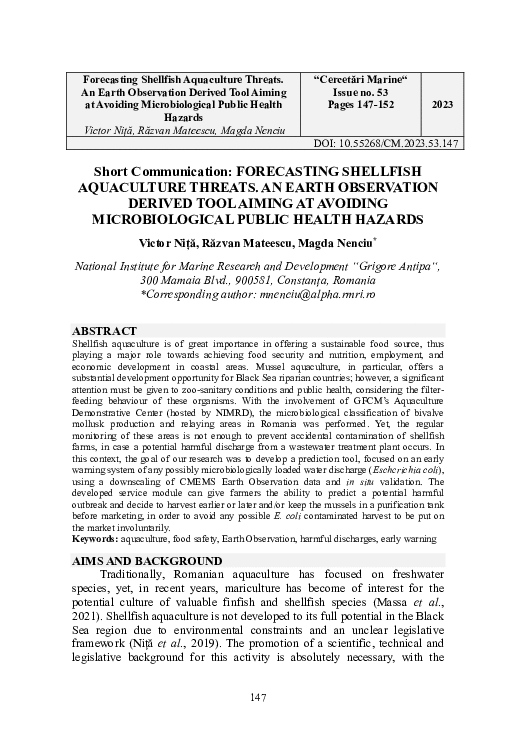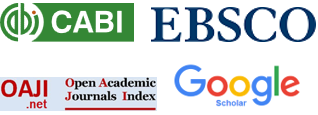Forecasting Shellfish Aquaculture Threats. An Earth Observation Derived Tool Aiming at Avoiding Microbiological Public Health Hazards
DOI:
https://doi.org/10.55268/CM.2023.53.147Keywords:
aquaculture, food safety, Earth Observation, harmful discharges, early warningAbstract
Shellfish aquaculture is of great importance in offering a sustainable food source, thus playing a major role towards achieving food security and nutrition, employment, and economic development in coastal areas. Mussel aquaculture, in particular, offers a substantial development opportunity for Black Sea riparian countries; however, a significant attention must be given to zoo-sanitary conditions and public health, considering the filter-feeding behaviour of these organisms. With the involvement of GFCM’s Aquaculture Demonstrative Center (hosted by NIMRD), the microbiological classification of bivalve mollusk production and relaying areas in Romania was performed. Yet, the regular monitoring of these areas is not enough to prevent accidental contamination of shellfish farms, in case a potential harmful discharge from a wastewater treatment plant occurs. In this context, the goal of our research was to develop a prediction tool, focused on an early warning system of any possibly microbiologically loaded water discharge (Escherichia coli), using a downscaling of CMEMS Earth Observation data and in situ validation. The developed service module can give farmers the ability to predict a potential harmful outbreak and decide to harvest earlier or later and/or keep the mussels in a purification tank before marketing, in order to avoid any possible E. coli contaminated harvest to be put on the market involuntarily.

Downloads
Published
How to Cite
Issue
Section
License

This work is licensed under a Creative Commons Attribution-NonCommercial-ShareAlike 4.0 International License.
This is an open access journal, which means that all content is freely available without charge to the user or his/her institution. Users are allowed to read, download, copy, distribute, print, search, or link to the full texts of the articles, or use them for any other lawful purpose, without asking prior permission from the publisher or the author. This is in accordance with the BOAI definition of open access.






